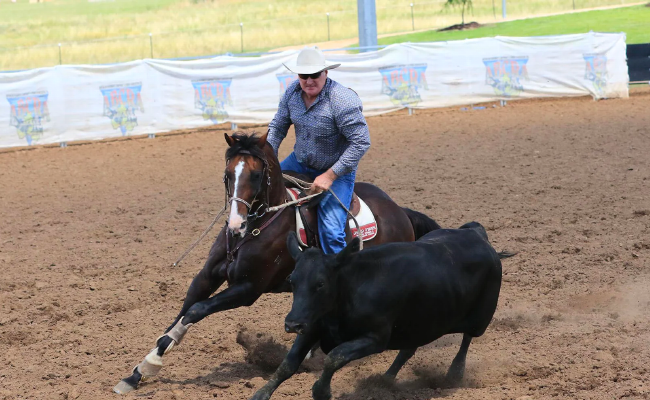
There are only a couple of truly Australian sports but one sport that captures the true essence of the Aussie bush is Campdrafting. While it’s one of the fastest growing Australian sports, there's still quite a divide between the city and the country and it's popularity. However, with so many more Australians leaving the city for a more rural lifestyle there hasn’t been a better time to explore the wonderful world of Campdrafting.
The History of Campdrafting
The origins of campdrafting began in back in the 1880s in the eastern state where young station hands would muck-around competing within cattle yards and drover camps. Working to peel off their chosen beast from the mob, they would work them at full gallop around a figure eight within a paddock. This was their chance to show off their skills, horsemanship and knowledge of cattle, as well as provide a healthy competitive platform on the rare occasion they had some downtime.
The Rules
Today Campdraft has become a full blown sport. The rules are pretty simple: the horse and rider begin their ride within the ‘cut out’ phase where they select their beast and peel it from the mob within the pen (which is also known as the camp). This section is worth a total of 26 points. While this is only worth a quarter of the total 100 points available, it is one of the most important. Once the rider has been able to satisfy the judges that they are able to control their beast and isolate them from the mob, they proceed to the ‘course. This section is worth 70 points and this is where the riders can really shine. They must control their beast in a figure of eight and follow a number of strict rules that provide for a spectacular show of horsemanship. Once the rider has been able to control their beast around the 'course' they must then move them through the final gate, worth 4 points. The highest scoring run wins the competition but if a rider fails at any stage their ride is aborted (cracked), signalled by a judge, who is normally on horseback, cracking his whip.
The reason this sport has grown so fast is because of the amazing horsemanship, courage and skill that goes into it. On the outside, they make it look simple, but as Ben Hall, an Australian Campdraft champion said, it’s about “understanding two animals at the same time, split-second timing and judgement".

Images from Australian Bushmen’s Campdraft and Rodeo Association (ABCRA)
Competing in a Campdraft
The competition of Campdraft is still a little fragmented with four umbrella bodies covering a wide range of locations on the east coast, however, you don’t need to go far to see this competition in full swing. Most rural towns will host at least one weekend event a year where many competitors will travel thousands of kilometres to have their chance to win within a number of classes from junior to senior riders.
The money side is very much fuelled by the competitor’s entry fees which can range from $5-$400 depending on their category of choice. The general public are normally free to enter as they generally comprise of volunteers who follow the riders and assist in their preparations.
This doesn’t mean there isn’t a glamorous side to Campdrafting. Paradise Lagoon, just inland from Rockhamption, central Queensland, hosts a spectacle in itself with three newly-built ‘courses’ and ‘camps’, including a restaurant and a prize pool of upwards of $200,000.
Proof there’s still room to grow in this sport.

